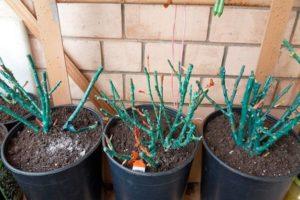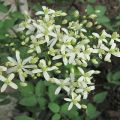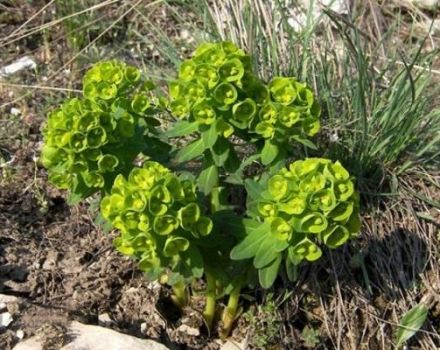Description of climbing roses of the Lavinia variety, planting and care rules
Lavinia rose is an excellent decorative crop that is actively used in garden design. That is why the plant is very popular with gardeners. To succeed in growing a crop, you need to take good care of it. To do this, properly moisten the soil and prune. Timely fertilization is also important.
History of origin
The plant was bred in 1980. This was done by a German gardener. Gradually, the culture gained more and more popularity among lovers of climbing roses. In 1999, she was honored with the Syracuse Rose Society Show.
Description and varietal characteristics of the graceful rose Lavinia
The climbing rose Lavinia has long and slender shoots that branch strongly. The bush is capable of reaching 3 meters in height. Its width is 1.5 meters. Flowering shoots are decorated with clusters of inflorescences, which include 3-7 roses. When the buds open, the flowers take on a bowl-like shape. The petals gather around the corolla and are distinguished by a rich pink color.
The rose is characterized by alternate leaves. There are 5 leaf blades on 1 petiole. They are distinguished by a rich dark green color and jagged edges. The leaves are large and dense in texture.
The plant is characterized by a developed root system. It goes into the depth of the ground by 2 meters. The roots do not like stagnant moisture. Therefore, when landing, you should not place them too high.
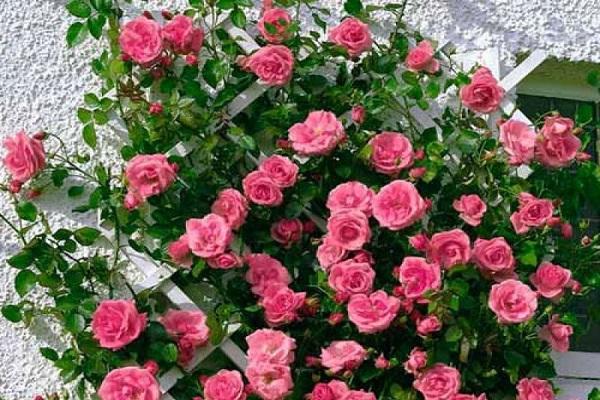
Differences from other varieties
This is an unpretentious culture that normally tolerates various climatic influences. The bushes are able to withstand light frost and rain. They are characterized by abundant flowering until the very frost. The culture is characterized by strong immunity to most diseases.
Thanks to its powerful shoots, the rose is able to grow without support.
Bloom
On the brushes, 7 flowers are formed, the diameter of which is 9 centimeters. Up to 50 fragrant flowers appear on large bushes, which have large and juicy petals. The flowering of the plant lasts from May to September. In warm climates, a small number of inflorescences persist until October.
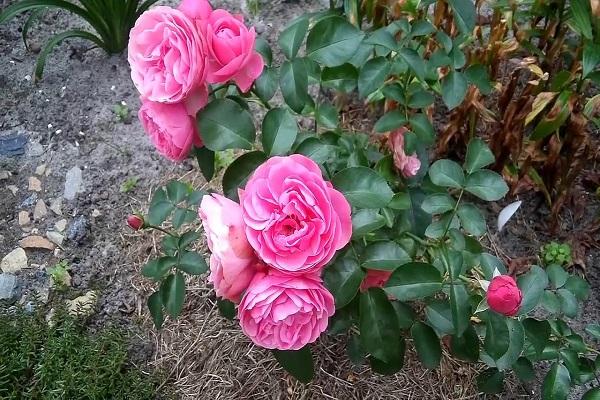
It is definitely recommended to pluck the first buds, since a young plant spends a lot of energy on their development. Old buds should not be removed immediately after flowering. Some can be left until frost.
During the flowering period, you should not apply nitrogen fertilizers. They negatively affect the quality and quantity of colors.After the formation of buds, the rose is watered with an interval of 10 days.
Growing features
In order for the rose to develop normally, it is worth paying attention to planting work.
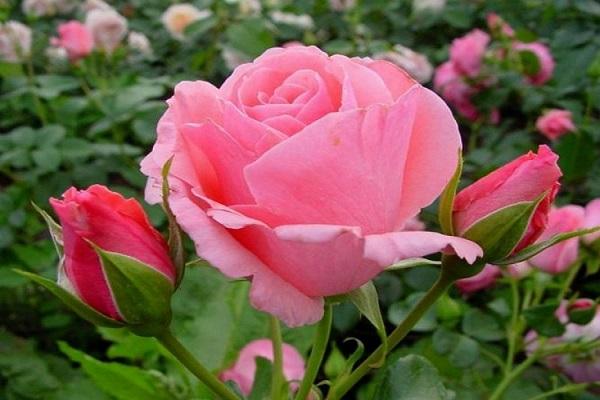
Site preparation
When choosing a site, you should focus on the following criteria:
- The place should be sunny. In the afternoon, slight partial shade is possible.
- There should be no drafts and strong wind gusts.
- Groundwater should be deep enough - below 2 meters.
- When choosing a soil, it is worth giving preference to fertile loams that have a neutral reaction.
When optimal conditions are created, the rose will grow and develop normally. Before planting, 40-60 grams of superphosphate and 20-25 grams of potassium salt per 1 square meter should be added to the soil.

The specifics of the choice of seedlings
When choosing planting material, you should focus on the following features:
- Good quality seedlings should contain 2 or more woody shoots. It is best to choose bushes with 4 shoots that are directed in different directions.
- The stems should not have shriveled bark or dry branches.
- The plant should not be stained. They indicate the presence of a disease.
- There should be no loose bark in the graft area.
- A healthy and fresh seedling should have swollen buds. If they are absent, the drying of the culture can be suspected.
- The roots should be dark brown. It is important that they are strong and resilient.
Planting process
First, it is recommended to make a 60 centimeter depression. At the bottom it is worth placing a composition of peat and humus. It is also recommended to add some sand. Then shorten the branches to 20 centimeters and cut the roots to 30 centimeters.
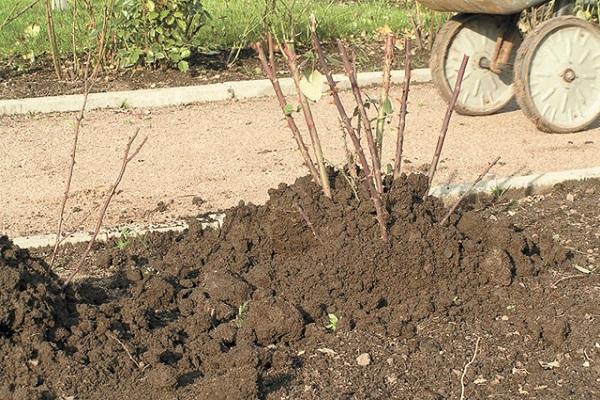
Then immerse the seedling in the groove and sprinkle with fertile soil. Water and fill up the soil abundantly. Deepening the root collar will provide additional roots. After 20 days, the soil should be carefully shaved off the plant.
Flower care rules
In order for the plant to develop normally and bloom magnificently, it is recommended that it be provided with full care.
Watering and feeding
The soil should be moistened once every 7-10 days, pouring a bucket of water under it. Rose does not perceive stagnant water well. In this case, rotting of the root system begins. In hot and dry weather, watering is carried out at intervals of 5 days.
When the first leaves appear, the rose is fed with nitrogen fertilizers. In the second year, organic mixtures or combined mineral fertilizers should be applied. Poor soil is fed at intervals of 10 days.
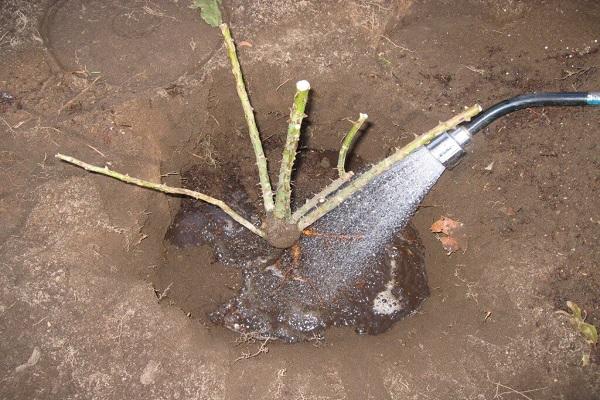
Pruning
In order for the plant to develop normally, it is recommended to prune it. The sanitary procedure is to remove diseased and dry shoots. They are cut at a slight angle using a sharp knife or pruner.
To improve the appearance of the plant, decorative pruning is carried out. The rose blooms exclusively on the shoots of the last year, therefore it is forbidden to cut them off. Late pruning provides the crop with sufficient nutrients for the winter.
Wintering
The rose should be properly prepared for winter, since some of the young shoots freeze. With the arrival of frost at -5 degrees, it is worth removing the branches from the supports and laying the bush on the ground. It is worth laying down straw or peat. To prevent the plant from rising, it is fixed with wire. From above, the rose should be covered with fir branches. Agrofibre is also suitable.
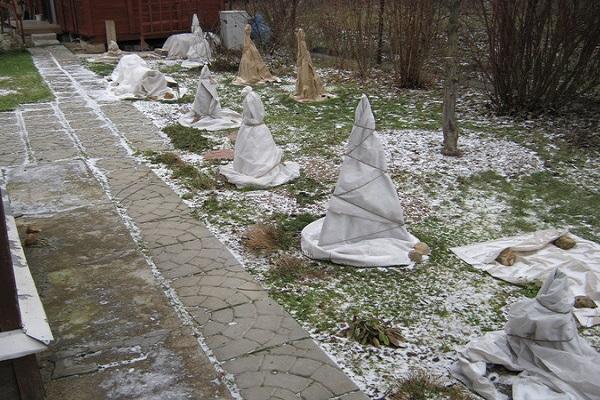
Disease and pest control
Of the pests, the rose most often encounters aphids, thrips, leaf rollers, spider mites. Also, the plant is susceptible to attacks by rose sawflies. Insecticides help control insects.
The diseases to which the rose is susceptible include powdery rose, gray rot, bark burn. There is also a risk of developing bacterial cancer. Fungicides help to cope with fungi.In advanced cases, the plant has to be destroyed.
Reproduction
All breeding methods fall into 2 broad categories - spring and autumn. This allows the grower to choose the right option.
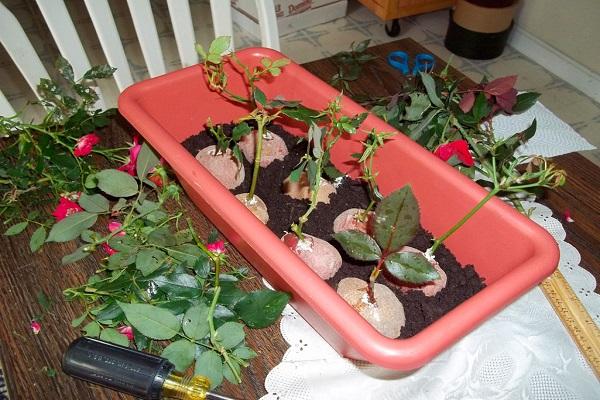
Spring ways
To breed a plant by lazy cuttings, you need to do the following:
- choose a healthy lash and make several small cuts near the kidneys;
- make a groove with your hand and place the cut vine into it, without cutting it off from the bush;
- press the vine to the ground and sprinkle;
- water periodically.
In this case, several seedlings for breeding will be ready in the fall. To plant a plant in open ground, you should do the following:
- cut the middle of a healthy shoot with 3 healthy buds;
- leave 5 sheets;
- soak the seedling in Kornevin and place it in moist soil;
- pour abundantly and cover with a glass jar;
- when roots appear, the jar can be removed.
You can also get vaccinated:
- make a T-shaped incision on the root of the rosehip, open the bark and place a healthy rose shoot in the pocket;
- press tightly and wrap with foil;
- sprinkle with soil 5 centimeters above the vaccination site;
- loosen the film after 2 weeks.

Autumn way
In this case, you need to prepare a cutting from a healthy lash. Its size should be 10-15 centimeters. Lignified annual shoots are suitable for autumn rooting.
Place expanded clay, a layer of peat, sand and garden soil at the bottom of a plastic bottle. Stick in the handle and cover with a plastic bottle on top. Roots will appear in 3-6 weeks.

Use in landscape design
Rose Lavinia goes well with other plants. Experienced flower growers advise combining it with low crops. The optimal neighbors are lavender, sage, forget-me-not. Cereals and bells are also great.
When decorating a hedge, you should use a combination of rose and thuja. In this case, the distance between plants should be 1-1.48 meters.
Rosa Lavinia is considered a popular garden culture, which is actively used in landscape design. The plant works well with other flowers and can be used to create spectacular hedges. To get a lush bloom, you need to provide the culture with comprehensive care.

